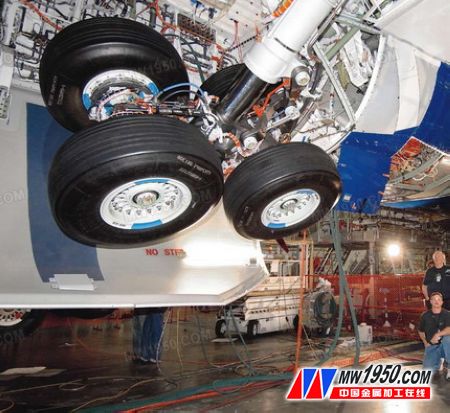High quality cutting of aircraft landing gear
The landing gear specialist Messier-Dowty Aviation UK has spent the past five years developing an efficient and economical way to process these high-quality, complex titanium parts, including those from Seco Tools. Help and advice.
When the large structural components used for aircraft landing gear became the backbone of the Messier plant in Gloucester, England, the challenges posed by the pillar beams on the Boeing 787 Dreamliner have tested the company's overall determination and design skills. This is mainly because the specially developed 5-5-5-3 material represents the next generation of titanium alloys, and when the project started in 2003, there were no suitable cutting tools.
“This material has been developed to provide an impressive strength-to-weight ratio,†explains Philip Spiers, Messier's Manufacturing Development Manager. “One percent of the aircraft’s empty weight savings can reduce fuel consumption by three percent, and the return is significant, especially today’s fuel accounts for more than 30% of the total cost of flights.†To help develop Processing solutions, Messier invited a number of excellent tool suppliers carefully selected to discuss the goal of "accelerated process development." Seco Tools, which originally had experience in processing “standard†titanium alloys, launched its first cutting test in 2004.

While efficiency and cost are the main drivers, these eager pursuits must not be at the expense of quality. With a descent force of more than 130 tons acting on each strut beam, parts with poor quality are never allowed to be machined. Moreover, each blank costs a lot of pounds in thousands: the production of waste cannot be a selected item at all, especially when the project represents the first commercial of Messi's landing gear from Boeing. contract.

The machine used to perform the roughing of titanium forged blanks is a six-spindle DST Droop & Rein CNC milling machine. Although it is far from the latest model of the Gloucester plant, Mr. Spiers said: “No company in the world can match the unit cost of each of its spindles.†The machine-specific gear-driven headstock is available at lower spindle speeds. High power.
Starting from a tool life that is only slightly better than counting in seconds (due to extremely high heat and cutting forces), including the British David Pearson and Dave Todd and more experts from Seco's Swedish headquarters The tool team set out to achieve a significant increase in performance by modifying the micro-geometric angle of the cutting edge. In tandem with ongoing material grade testing and cutting strategies, continuous adjustment of parameters, this led to the development of Spiers now named "a stable, repeatable process."
The solution is based on the use of a 80mm diameter corn milling cutter (R220.69 Power Turbo) and a contoured milling cutter (R220.29) with five modified 20mm round inserts (RPHT.2006) based on carbide A special variant of the material grade T350M. The tool is used to insert the profile of the forging, which is removed from the surface of the part by approximately 30 mm.
“For this process, we have a 'target' cost that must be achieved,†Spiers said. “If we assume a target cost ratio of '1' (which is our current state), we have a ratio of 1.6 after the first cutting test, which shows how far we are from completing the project. Basically, through Our cooperation with tool suppliers has reduced the roughing time by 60-70%."
Spiers sincerely praises the efforts of the Seco team to provide solutions to this challenging engineering dilemma. “We all have to go back to the basic facts,†he said. “The material is new, there are no ready-made parameters, which means we have to guess an initial 'best point' and try to improve the solution by trying different ideas. This is a Messier manufacturing engineer and tool supply. The business team is working to develop new ideas and use them for trial cases."
“With the simple application of the prior art, the final solution has not yet been elicited, but experienced engineers have demonstrated the ability to solve tough manufacturing problems. From Seco Tools here and our brother company in France It has always been first-rate, directly acting at a specific level to provide the best solution."
However, Mesier and Seco Tools have not completely ended the project. “We realize that our costs are rising, so we have to do more to ensure a better profit margin,†Mr. Spiers said. “Because of this, we are working closely with Seco Tools on plating, hoping to achieve even greater gains.†Messi’s determination reflects the innovative spirit of British Airways in a century, Samuel Franklin Cody in Farnborough, England. It has been 100 years since the first successful, continuous, and power-driven flight (the venue of the biennial air show). Technology may have been ahead of the game since 1908, but its spirit remains the same.